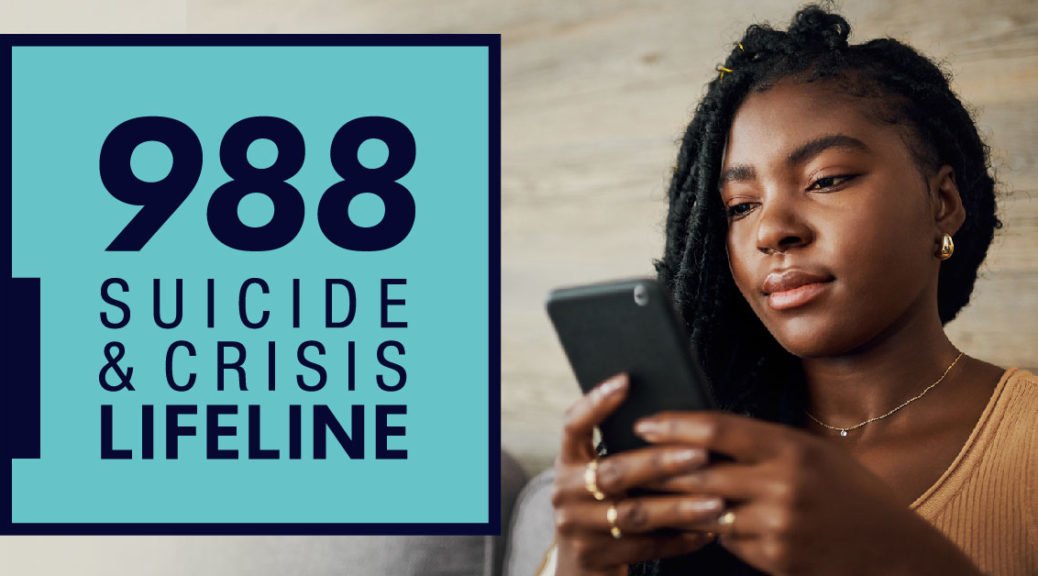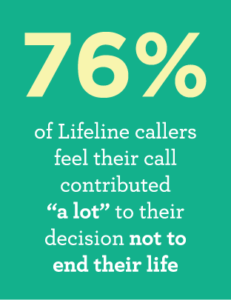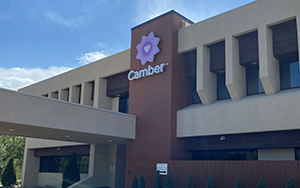What You Need to Know About the Suicide Prevention Hotline Changing to 988

This blog was originally published in September 2020 and was updated in September 2022 to reflect the most current information.
The Federal Communication Commission (FCC) has created a new 3-digit dialing code to connect callers to the National Suicide Prevention Lifeline for mental health crises. Just like we’re trained from childhood to call 911 for immediate assistance with fire, health, or safety emergencies, now 988 is designed to be a resource for immediate mental health emergencies, people at risk of suicide and other crises. Here’s what you need to know.
What is the 988 Suicide & Crisis Lifeline?
The new 988 hotline aims to be a free, confidential suicide prevention number and crisis line for people experiencing any type of mental distress. Previously, the National Suicide Prevention Lifeline was an eleven-digit 1-800 number. In shifting to a three-digit code, there’s hope that reaching out for mental health emergencies will become a routine, destigmatized response to mental health crises. Just like calling 911 is the instinct when you smell smoke, 988 may become an instinctive call when a mental health emergency occurs. You can call, text, or chat online and receive help immediately.
For years, the National Suicide Prevention Lifeline has offered life-saving support: The lifeline received nearly 2.4 million calls in 2020 alone. Those who call the 988 hotline will connect directly with a 24/7 crisis call center offering trained professionals and free immediate help. Rerouting mental health crises from 911 is another positive result of launching the 988 hotline. Those needing mental health support will find the more specific assistance they need when they call the 988 number, as respondents at 988 are trained and equipped to handle mental health situations.
More to Know About the 988 Hotline
As you seek to spread the word about 988, here are a few things to keep in mind about the new number and its resources.
- Think you won’t need 988? Someone you care about might. In 2020 alone, the U.S. had one death by suicide about every 11 minutes. For people aged 10 – 34 years, suicide is a leading cause of death. Additionally, from April 2020 to 2021, over 100,000 individuals died from drug overdoses. So even if you don’t think you’ll need the 988 hotline, someone you care about may. You can also call the line on behalf of someone else. If a loved one has expressed a desire to harm themselves or is experiencing a mental health crisis, you can reach out for support and helpful information.
- 988 offers support beyond suicide prevention and can be helpful for any kind of mental distress, substance abuse included. The long-term vision for 988 is a robust, national crisis care response system that links callers to community-based providers for a full range of crisis care services, as well as tools and resources to help prevent future crises.
- The 988 hotline aims for accessibility and inclusivity. The line offers communication options in 150 languages for call, text or chat.
- Trained counselors staff the hotline with experience and expertise in de-escalating crises. This professional training can be a crucial element that makes a difference in a serious situation.
- Make sure the 988 hotline is live and operational in your state before sharing it with those around you. Infrastructure may differ between states, so ensuring the hotline is live and in practice before calling is essential. For people in states where the line isn’t yet up and running, 911 will still be an ideal resource.
How the National Suicide Prevention Hotline Helps
Over the years of its service, the National Suicide Prevention Lifeline has a proven track record. A survey by the FCC revealed that those who called the suicide prevention number were “significantly more likely to feel less depressed, less suicidal, less overwhelmed, and more hopeful by the end of calls.” These positive results were all seen when the suicide prevention hotline was a less memorable 1-800 number. With the move to 988, the National Suicide Prevention Lifeline has the opportunity to make a more significant impact and expand to help those facing mental health challenges of many kinds. The mental health crisis continues to grow across the country, with the percentage of adults with a mental illness reporting unmet treatment needs increasing every year since 2011 — which means 988 has the potential to make a dramatic impact.
These positive results were all seen when the suicide prevention hotline was a less memorable 1-800 number. With the move to 988, the National Suicide Prevention Lifeline has the opportunity to make a more significant impact and expand to help those facing mental health challenges of many kinds. The mental health crisis continues to grow across the country, with the percentage of adults with a mental illness reporting unmet treatment needs increasing every year since 2011 — which means 988 has the potential to make a dramatic impact.
What can you do to help prevent suicide?
- Be aware of suicidal behavior. Consistently check in with loved ones and pay attention to their behaviors. Young people are especially susceptible to social pressures of all kinds. For parents, it’s important to be aware of what your child might be experiencing to better understand their emotional and mental health. Ask your child and loved ones how they’re doing. Ask them if anything is bothering them—listen closely to what they say. Remind them that you’re there to support them in whatever they may need.
- Monitor media consumption. Being aware of the media your loved ones are consuming can also be helpful in understanding what they are going through. This applies to both a child’s and an adult’s media consumption. Because of its constant presence in their lives, social media can create negative perceptions that affect mental health. It’s also important to have open, honest, and age-appropriate conversations with children about what they’re seeing.
- Encourage discussion. If suicide prevention is an important topic to you, engage with others about it. Share this article and others via social media to spread mental health awareness. Listen to those who are suffering and encourage them to speak with loved ones and professionals. Most importantly, urge compassion. It’s important to spread the message that those contemplating suicide are suffering and need support, not stigma.
- Educate yourself. Take time to learn common warning signs of mental distress in youth. We also provide a free mental health assessment caregivers can do with a child to determine if they may be struggling with depression and if it’s time for professional support. Click here to access this assessment instantly.
Watch this video for more education about suicidal ideation warning signs and how to help a child in crisis.
Additional resources
As you look further into the new suicide prevention hotline, be sure to investigate other valuable resources, including the following.
- Texting HOME to 741741 for 24/7 support from the Crisis Text Line.
- Calling the National Alliance on Mental Illness helpline at 800-950-6264, which is staffed by volunteers who have mental health conditions.
- Reaching out to Warm Lines, which also provide peer support on a local level.
- Calling the Suicide Prevention Lifeline at 1-800-273-8255.
- Using the Disaster Distress helpline at 1-800-985-5990 or texting TalkWithUs at 66746.
- Click here to read more blogs about suicide prevention.
And as always, Camber Children’s Mental Health is here to help you navigate any mental health needs a child in your care may face. We have children’s mental health hospitals and residential treatment facilities in Kansas City, Wichita and Hays. We are available by phone 24/7 to answer any questions you have or to begin the admission process. Our lifesaving interventions have been helping youth achieve mental health wellness for over 30 years. Call us today:





